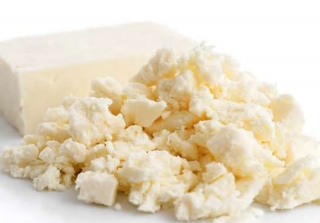
Discover Mediterranean Cheese
28 February 2020Popular Greek yogurt opened the Mediterranean cheese market beyond basic Feta.
By Real California Milk
The emergence of Greek-style yogurt set the American food world on fire, and opened doors for other Mediterranean dairy products, particularly cheeses. While Feta is as beloved as ever, there is more to Mediterranean cheese than the salty, crumbly Feta that is sprinkled over salads, marinated in herbs and olive oil, and used as a foundation ingredient for baked spanakopita spinach pie.
Ackawi is a semi-firm, unripened cow’s milk cheese with a mild flavor and a smooth, yet firm texture. As one of the oldest cheeses produced in Lebanon and Syria, Ackawi is salty and white like Feta, yet softer in texture and ideal for enjoyment at the table with bread and fruit. A Middle Eastern-style cheese with complex flavor. Also spelled Akawi and Akawieh.
Halloumni has a firm texture and high melting point, so it can easily be grilled and fried. It’s ideal for topping salads, adding creaminess to gyro-style lamb and chicken sandwiches, and as a salty contrast to prosciutto-wrapped melon. Fry it until golden brown and top with tomato sauce, as one would polenta.
Labneh (also known as labane and labanah) is “yogurt cheese” made by straining thick, full-fat yogurt overnight in cloth. It’s similar to Green yogurt and traditionally eaten at breakfast. Labneh is thicker because it is highly concentrated. Labneh is used as a yogurt spread and is commonly paired with pita bread, toast and veggies. It’s also an excellent substitute for cream cheese.
Storing and Handling
When purchasing cheese, make sure the package is properly and tightly wrapped and sealed. Do not purchase any cheese that looks dry or discolored, as the package seal may be broken. With fresh cheeses, check the freshness date on the package. Most cheeses will maintain their flavor and quality if properly stored. Keep cheeses in the refrigerator until needed. Once opened, follow these simple guidelines for storing cheese:
- Fresh cheeses should be treated just like milk and kept refrigerated. Many fresh cheeses can last for a few weeks if properly stored, so note the freshness date on the package. If you detect mold on a fresh cheese, discard it.
- Soft-ripened cheeses will keep for up to several weeks if properly stored. If you plan to use a soft-ripened cheese within a few days, store it in the refrigerator in its original plastic wrap.
- Semi-hard and hard cheeses can remain enjoyable for four to eight weeks if properly stored. If you do not plan to consume these cheeses within a few days after its original package is first opened, consider removing the original plastic wrap and re-wrapping in parchment or wax paper, which allows the cheese to breathe. After re-wrapping a cheese, store in a covered plastic container or an open resealable-type food storage bag. Open the bag a couple times a week to let in fresh air. If a small patch of mold appears on a piece of cheese, trim it off completely by cutting at least 1/4-inch below the mold and plan to consume the cheese soon.
- Very hard cheeses (typically used for grating) are much lower in moisture than other cheeses and will keep for months stored in the same way as semi-hard cheeses.
Want to know more about international cheeses? Click here to read a Gold Medal Classroom story featuring versatile and authentic Hispanic-style cheeses.
